|
Very excited to announce that I’m starting a weekly Children’s Yoga class, next Saturday, August 8th, at 11:30AM –also on the museum's fun and squishy lawn! Donation is by sliding scale. Pay what you can afford. I loved teaching Kid’s Yoga at Sage Yoga Studios in Fallbrook and I’ve missed it! Classes are 1 hour and 100% secular. The first half of the class is spent practicing breathing techniques and yoga poses, the second half of the class is given over to arts and crafts. If students prefer more yoga over crafts or vice versa, I’m happy and flexible to serve each child’s preference and level. Here's an excerpt from one of my favorite yoga for kids articles. The Benefits of Yoga for Kids By Marsha Wenig Our children live in a hurry-up world of busy parents, school pressures, incessant lessons, video games, malls, and competitive sports. We usually don’t think of these influences as stressful for our kids, but often they are. The bustling pace of our children’s lives can have a profound effect on their innate joy—and usually not for the better. I have found that yoga can help counter these pressures. When children learn techniques for self-health, relaxation, and inner fulfillment, they can navigate life’s challenges with a little more ease. Yoga at an early age encourages self-esteem and body awareness with a physical activity that’s noncompetitive. Fostering cooperation and compassion—instead of opposition—is a great gift to give our children. Children derive enormous benefits from yoga. Physically, it enhances their flexibility, strength, coordination, and body awareness. In addition, their concentration and sense of calmness and relaxation improves. Doing yoga, children exercise, play, connect more deeply with the inner self, and develop an intimate relationship with the natural world that surrounds them. Yoga brings that marvelous inner light that all children have to the surface. When yogis developed the asanas many thousands of years ago, they still lived close to the natural world and used animals and plants for inspiration—the sting of a scorpion, the grace of a swan, the grounded stature of a tree. When children imitate the movements and sounds of nature, they have a chance to get inside another being and imagine taking on its qualities. When they assume the pose of the lion for example, they experience not only the power and behavior of the lion, but also their own sense of power: when to be aggressive, when to retreat. The physical movements introduce kids to yoga’s true meaning: union, expression, and honor for oneself and one’s part in the delicate web of life. A Child’s Way Yoga with children offers many possibilities to exchange wisdom, share good times, and lay the foundation for a lifelong practice that will continue to deepen. All that’s needed is a little flexibility on the adult’s part because, as I quickly found out when I first started teaching the practice to preschoolers, yoga for children is quite different than yoga for adults. Six years ago, I had my first experience teaching yoga to kids at a local Montessori school. I looked forward to the opportunity with confidence—after all, I’d been teaching yoga to adults for quite a while, had two young children of my own, and had taught creative writing for several years in various Los Angeles schools. But after two classes with a group of 3 to 6-year-olds, I had to seriously reevaluate my approach. I needed to learn to let go (the very practice I had been preaching for years) of my agenda and my expectations of what yoga is and is not. When I began to honor the children’s innate intelligence and tune in to how they were instructing me to instruct them, we began to co-create our classes. We used the yoga asanas as a springboard for exploration of many other areas—animal adaptations and behavior, music and playing instruments, storytelling, drawing—and our time together became a truly interdisciplinary approach to learning. Together we wove stories with our bodies and minds in a flow that could only happen in child’s play. The kids began to call me Mrs. Yoga, and I called them Yoga Kids. We continued to work and play together until our creations bloomed into a program called YogaKids. The program combines yogic techniques designed especially for children using Dr. Howard Gardner’s theory of multiple intelligences. Gardner, an author and professor of education at the Harvard Graduate School of Education, describes eight intelligences innate in all of us—linguistic, logical, visual, musical, kinesthetic, naturalistic, interpersonal, and intrapersonal—and emphasizes that children should be given the opportunity to develop and embody as many of these as possible. In keeping with this theory, YogaKids integrates storytelling, games, music, language, and other arts into a complete curriculum that engages the “whole child.” We employ ecology, anatomy, nutrition, and life lessons that echo yogic principles of interdependence, oneness, and fun. Most of all, our program engages the entire mind, body, and spirit in a way that honors all the ways children learn.
0 Comments
:-D GOOD Afternoon! Hope this finds you having a wonderful Sunday! <3 Tomorrow will be our one month anniversary at Gregoire Combatives and we're honored and thrilled with the response! Woooooo! Thank you from the bottom of our hearts! :-D Steven Gregoire is an absolute gentleman and a pleasure to work with and we can't wait to add more classes to the schedule! We're thinking of a yoga flow class, a yoga one class and maybe a yoga for dudes class! Please share any and all feedback with us! We greatly appreciate it! See you tomorrow at 6:30pm! Can't wait! Lots of love, Val XO <3 <3 <3 The Kind Of Yoga People Google The Most If you've ever been curious about restorative yoga--Do you really just lay there?—you're in good company: A recent Google Trends report shows the number of searches for "restorative yoga sequence" has risen 120%. This could be because it's a more approachable form of yoga, says Jason Wachob, founder of wellness website MindBodyGreen.com. "Even though 20 million-plus people practice yoga in the US, there is often a perception that you need to be super-flexible or strong enough to do arm balances. But with restorative yoga, people don't feel like they're walking into something that they can't do," he says. If you've never experienced it, restorative yoga aims to relax a person physically, mentally, and emotionally. Holding certain positions, like corpse pose, for minutes at a time on pillows and blankets helps a person better connect with their breath, says Wendi Buick, a certified yoga instructor based in Colorado. "A powerful yoga class is awesome. But to find the time to sit back and put your feet up, to ground yourself and find mental peace [during a restorative sequence] is amazing." Not only that, adds personal trainer Holly Del Rosso, but someone who works out four to five times a week needs to relax and stretch their tight muscles. Skipping this step may lead to injury, she says. Adding a restorative yoga class to your weekly routine helps insure this doesn't occur. Plus, there's another benefit: Restorative yoga can help women burn belly fat, according to research presented at the 73rd Scientific Sessions of the American Diabetes Association last year. Overweight women who tried the practice for six months lost two and a half times more belly fat than women who just did basic stretching. Bottom line: Restorative yoga is worth the time. says Buick, "...where is that moment where you connect with who you are? Taking that moment to step back can show you just how strong and powerful you are." GOOD DAY TO YOU! :-) Hope this finds you doing very well! <3 Our theme of the past two weeks in yoga class has been gratitude. We learned about different research studies on gratitude, how gratitude benefits various parts of our lives, we practiced breathing with gratitude, and wrote a list of things we were grateful for, in between poses. I find the power of gratitude to be very strong. Gratitude has been my partner throughout life since listening to an Anthony Robbins tape at the age of 16. I was looking for answers and found them within. I have since kept a gratitude journal and my life’s journey, so far, has been GREAT! Not because it has been without fear and strife but because gratitude had become a tool to see each moment, no matter what the circumstances, as an opportunity to learn and grow. I encourage you to please take the time to start a gratitude journal. Just 3 things a day you’re grateful for. Try it for a week or two and see how it makes you feel. I could go on and on but instead I’ll share with you one of my favorite, quickie articles on the subject. Sending you infinite love, great peace and a world of gratitude! Hope this adds wellness to your life! Hope to see you in class! :-) <3, Val XO A Dose of Gratitude: How Being Thankful Can Keep You Healthy
Written by Robin Madell Medically Reviewed by George Krucik, MD. Published on Healthline.com Studies show that people who regularly practice giving thanks are happier. What if there was a solution to stress so simple that it involved nothing more than feeling thankful for the good things in your life? In fact, there is. That solution is called gratitude. Studies have shown that people who regularly practice feeling thankful have a leg up when it comes to their health. Robert Emmons, a psychology professor at the University of California at Davis, has been a leading researcher in this growing field, termed “positive psychology.” His research has found that those who adopt an “attitude of gratitude” as a permanent state of mind experience many health benefits. Emmons’ findings, along with those from other researchers such as Lisa Aspinwall, a psychology professor at the University of Utah, suggest that grateful people may be more likely to:
With that list of benefits, who wouldn’t want to try it? To get started giving thanks, consider integrating some of the steps below into your daily life. Focus Attention Outward Your attitude plays a large role in determining whether you can feel grateful in spite of life’s challenges. According to Emmons, gratitude is defined by your attitude towards both the outside world and yourself. He suggests that those who are more aware of the positives in their lives tend to focus their attention outside of themselves. Be Mindful of What You Have You may assume that those with more material possessions have more to be grateful for. However, research suggests otherwise. Edward Diener, a psychology professor at the University of Illinois, found that a high percentage of affluent people in Japan report low levels of life satisfaction, just as those living in poverty in India do. These findings suggest that it’s not how much you have, but how you feel about what you have that makes the difference. Keep a Gratitude Journal Recording what you feel grateful for in a journal is a great way to give thanks on a regular basis. Emmons found that those who listed five things they felt grateful for in a weekly gratitude journal reported fewer health problems and greater optimism than those who didn’t. A second study suggests that daily writing led to a greater increase in gratitude than weekly writing. Reframe Situations as Positive It’s not actually a challenging situation that is upsetting. It’s how you perceive the situation. The next time you find yourself complaining about life’s hassles, see if you can mentally “flip the switch” to frame things differently. For example, rather than getting down about missing an opportunity, try to see the positive side. You might now have more time to direct towards other priorities.
Awesome display from the skies!
( Shot from our house.) |
AuthorYOGA SKIES Archives
January 2020
Categories |
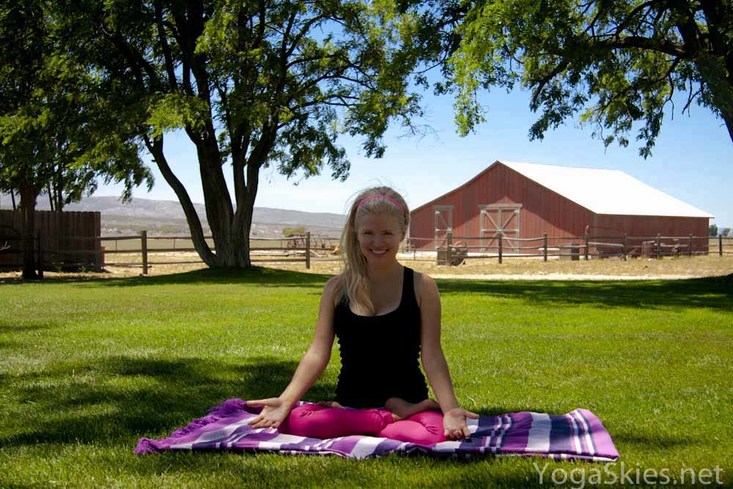

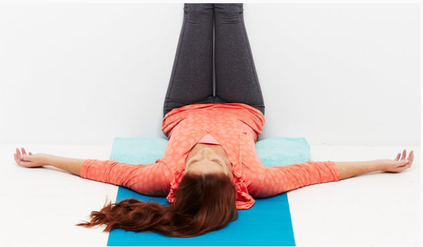


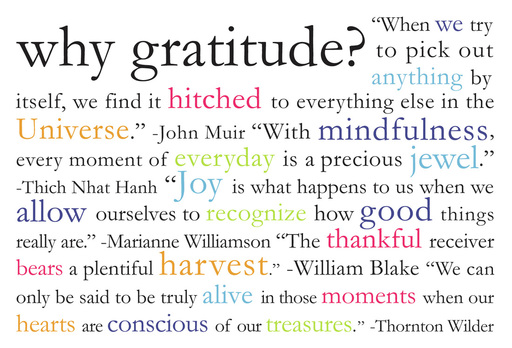
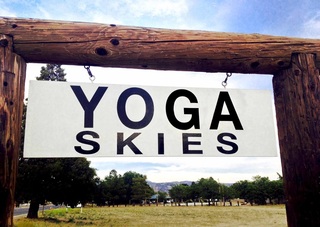
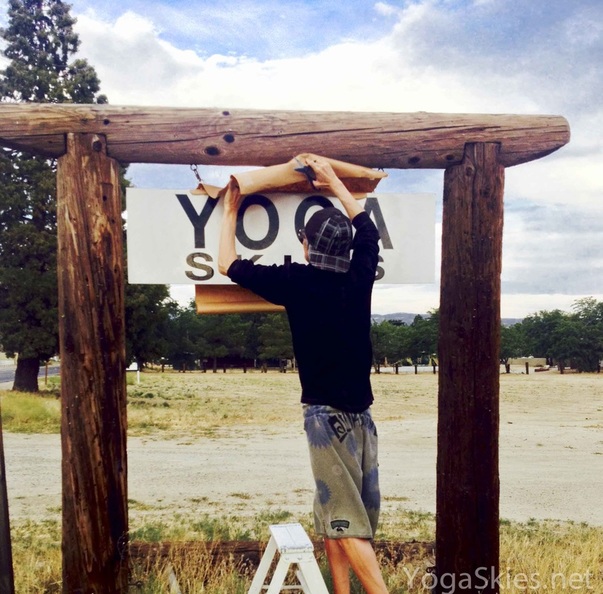

 RSS Feed
RSS Feed